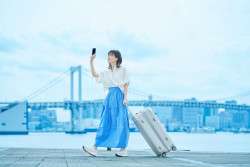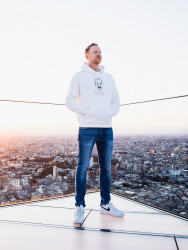
March 30, 2012
Constructing the Future
Metropolis follows the building of a family’s house with Asentia
By Metropolis
Originally published on metropolis.co.jp on March 2012


Asentia offers a unique approach to house construction in Japan, allowing the client to choose from a range of talented architects—each of whom brings his or her own specific experience and perspective to bear on your home-building project. To delve into the process of building your house in Japan, Metropolis has been talking with one of Asentia’s clients who is in the middle of doing just that.
For Jean de Noyer, buying a house a few years ago in Ebisu had been a mistake. He and his wife moved from an apartment to be more comfortable with their children. But once their third child came along, the place became too small. Second, they were never happy with the way the house was constructed.
“The house was built in the early ’90s after the Bubble, when regulations were weak,” says the 37-year-old, French-born application engineer, who moved to Tokyo from San Francisco. Poor insulation made the house unbearably cold in the winter, and stiflingly hot in the summer. “And it looked like a 50-year-old house, even though it was just 15.” De Noyer and his wife sold the house and went back to apartment living. But with three kids scurrying around, they were beset by complaints from other residents. De Noyer longed to get back into a house and he finally convinced his wife. But this time they would do it right. They would design it themselves.
De Noyer was surprised to find the process different in Japan from in Europe. In Europe it is driven by the architectural firm, while in Japan you go through the construction company. However, Asentia offered something different from the other companies on the market. It stood out for the de Noyers because it allowed them to select from a range of architects—and most importantly, it allowed them to deal directly with the talent designing their house.
“The massive construction companies bar your way to the people that matter,” explains de Noyer. “You talk most of the time with a sales guy, and then the architect comes round once in a while to fake that he cares about you.” With Asentia however, de Noyer and his wife felt they were being treated with care, and—crucially—communicating directly with the architect.
De Noyer had some quite particular ideas about what he wanted. Knowing they would be building three stories on a small piece of land, he wanted to make a livable feature out of staircases. The architect they chose in the end, from many proposals by different candidates, was the one who best fit their ideas of what they wanted. There were many discussions about the finer details, and the architect was very open to the couple’s ideas. De Noyer did have to compromise on some things though—the idea of a garden, as much as he wanted, was just not doable…

So now, waiting to commence building and looking back on the process to date, what has been the hardest part?
“Finding the land was the hard part,” says de Noyer. “You have to make yourself known to all the agents, and wait for the right spot to pop up.”
And the most enjoyable?
“I have really enjoyed the discussions with the architects. One interesting thing to come out was my wife’s and my different interests,” he laughs. “I was focusing on volumes and shapes, and my wife was focused on interior decoration and paper, etc. We made a pretty good team!”
Ultimately, he would recommend this experience over choosing from a market of identikit houses. “If you can find a house to buy that matches what you want, then fine. But most houses are built using the typical Japanese family as a model. Two kids. No special tastes. No special needs.”
And will you want to keep the property if you buy one, considering that houses lose value in Tokyo? “If you want to get the house you want,” concludes de Noyer, “then build it yourself, and the investment is not in the property market—but in your life.”
Follow the de Noyer family’s house construction in future issues.
- Tel: 03-5422-7413 (English assistance)
- Email: english-inquiry@asentia.co.jp
- www.asentia.co.jp/english

asentia architectural spotlight
Lambiasi and Kentaro
One of the architect teams on Asentia’s books, Washington DC-born James Lambiasi and Hiroshima native Kentaro Hayashi work under the concept “bold material, delicate detail.” Having built their career in César Pelli and Associates, Japan, they became design partners and co-own their own business Lambiasi & Hayashi Architects.







